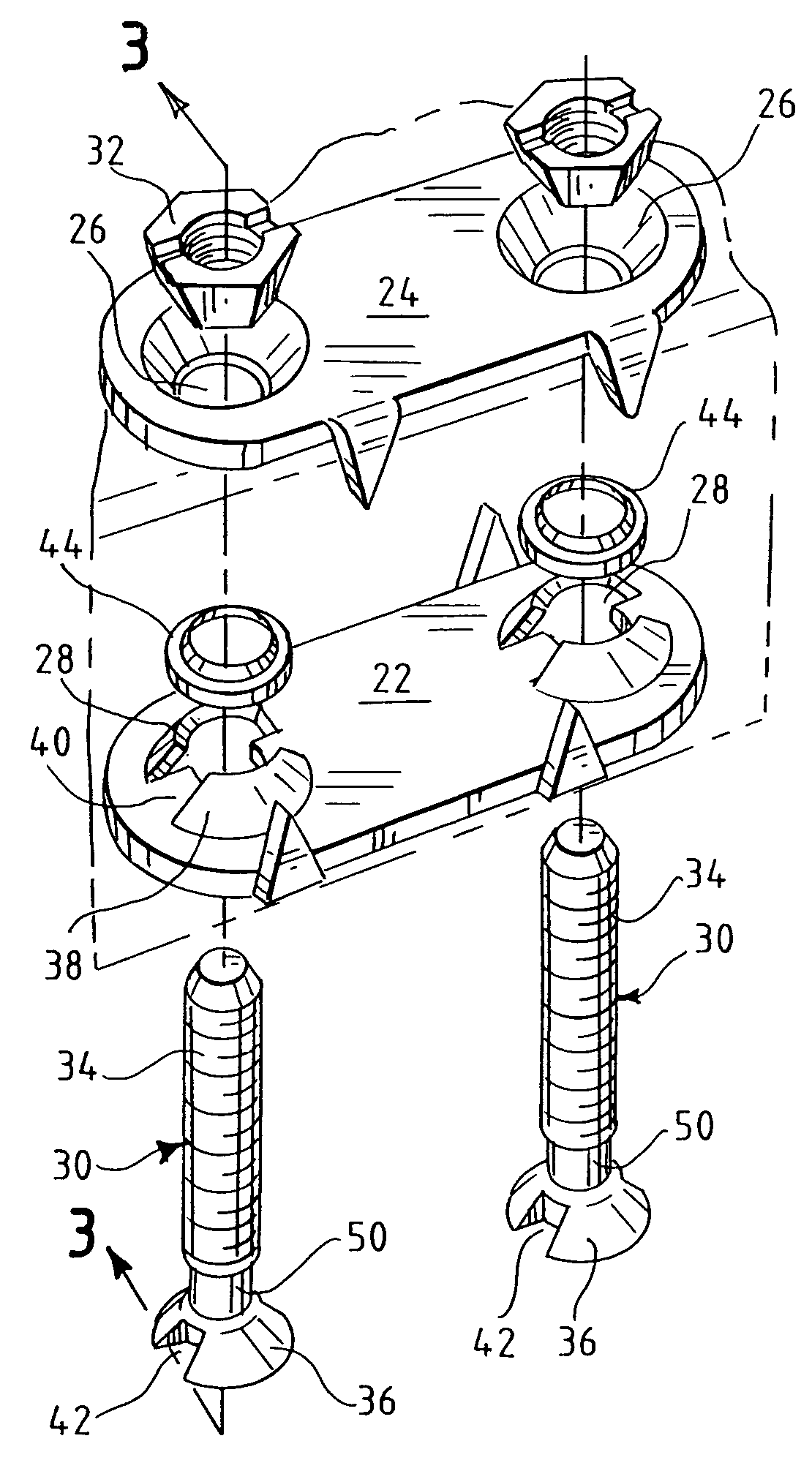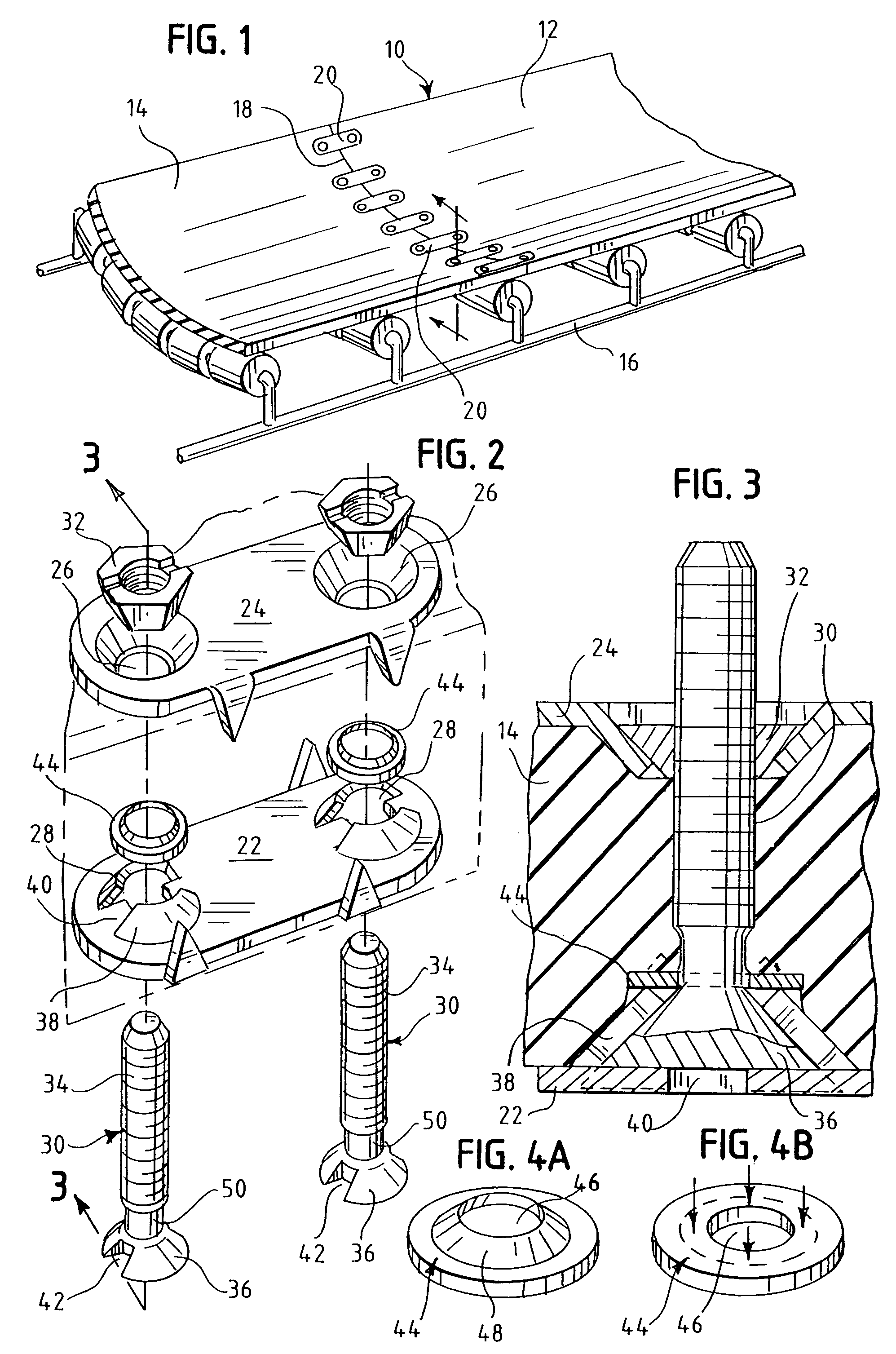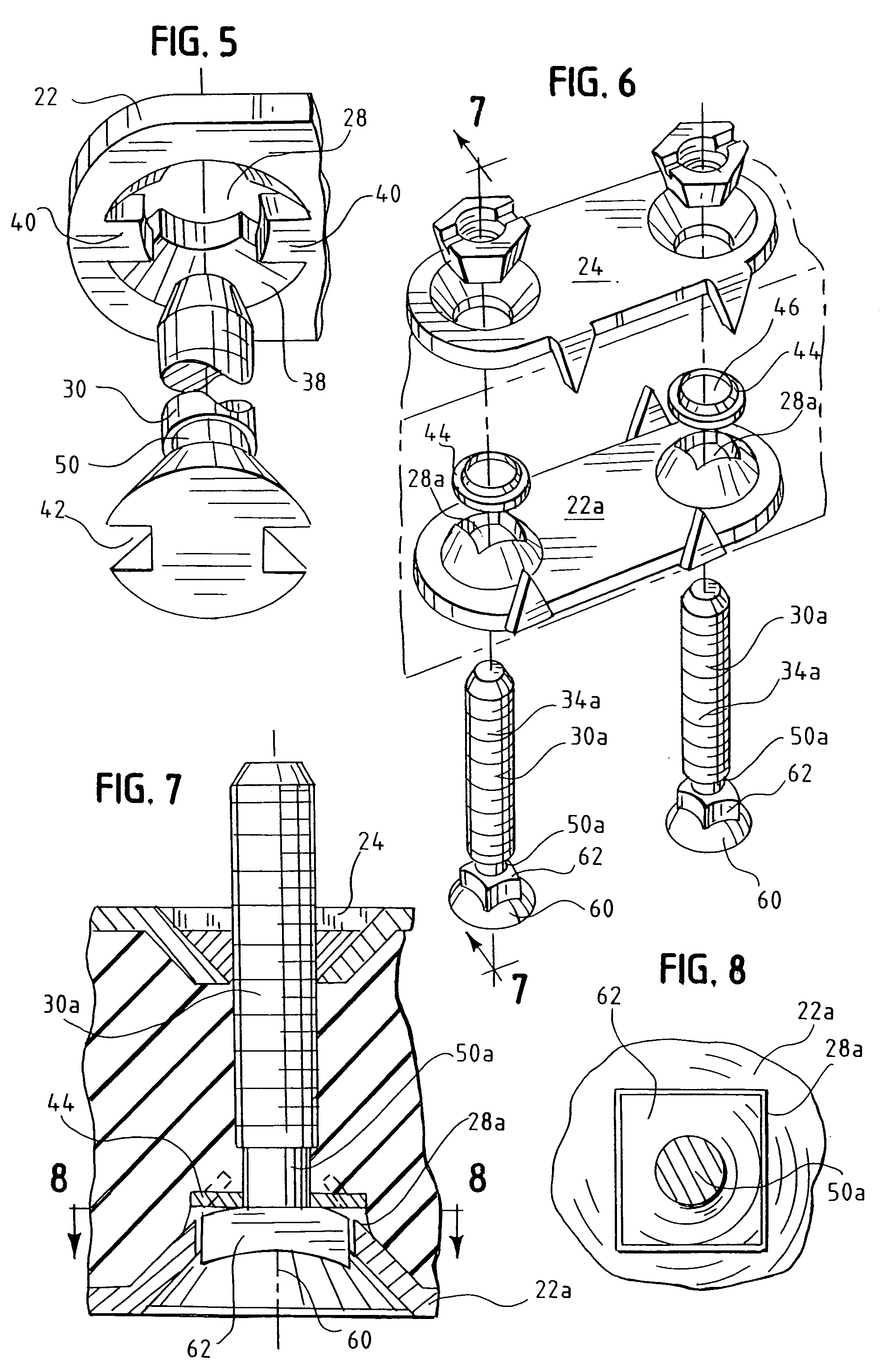Belt fastener assembly
a technology of fasteners and belts, applied in mechanical equipment, transportation and packaging, ropes/pulleys, etc., can solve the problems of metal assembly clips, when installed on the lower plate, can become “sprung” or loose, and the basic cost is higher than for standard designs, assembly and swaging processes
- Summary
- Abstract
- Description
- Claims
- Application Information
AI Technical Summary
Benefits of technology
Problems solved by technology
Method used
Image
Examples
Embodiment Construction
[0007]By this invention, advantages are achieved in both cost and efficiency of assembly and use in a belt fastener system for attaching belt ends together.
[0008]By this invention, a belt fastener assembly for fastening belt ends together is provided. The fastener assembly comprises: first and second retention plates receiving and retaining substantially abutting belt ends between the plates. The first and second retention plates each define a plurality of bolt holes. A plurality of bolts having threads are provided, each bolt extending through a bolt hole of each of the first and second plates. The bolts also extend through portions of the belt positioned between the plates, to retain the first and second plates and the belt ends together. Nuts are carried on the ends of the bolts.
[0009]By this invention, washers are carried on the bolts, typically adjacent to heads of the bolts. The washers each have an aperture and, in an original condition prior to use, define a funnel-shaped, (...
PUM
 Login to View More
Login to View More Abstract
Description
Claims
Application Information
 Login to View More
Login to View More - R&D
- Intellectual Property
- Life Sciences
- Materials
- Tech Scout
- Unparalleled Data Quality
- Higher Quality Content
- 60% Fewer Hallucinations
Browse by: Latest US Patents, China's latest patents, Technical Efficacy Thesaurus, Application Domain, Technology Topic, Popular Technical Reports.
© 2025 PatSnap. All rights reserved.Legal|Privacy policy|Modern Slavery Act Transparency Statement|Sitemap|About US| Contact US: help@patsnap.com



